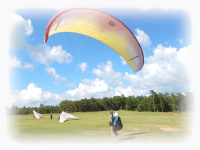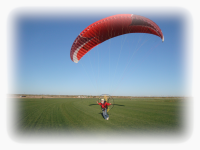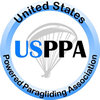Weather tools
by Had Robinson
updated May 15, 2021
Your safety and flying enjoyment will greatly improve if you know how to use the weather tools listed on this page. Our thanks to Lance Tripoli, Tom Bird, and other meteorologists at the National Weather Service for their help.
If most of this (below) is too confusing and you did poorly in physics then spend the $40/year and get a subscription to XCSkies. They do most of the work and give (6) of the most important forecast models and such things as the times of sunset and sunrise. It is, by far, the most comprehensive and easy to use forecasting tool for ultralight pilots.
Windy.com is a free substitute but takes more digging to get the info you need.
Pivotal Weather is somewhat technical but is free and used by professional meteorologists. It has all of the models for every altitude, including balloon sounding forecasts and the vorticity of the atmosphere, an important indicator of how turbulent the atmosphere may be from mixing of surface winds with winds aloft. On the downside, Pivotal is not mobile friendly and it requires users to understand Zulu or UTC time and the skew-t, among other things.
In general, XCSkies is the best value for the money. However, you still should check the NWS hourly graphical forecast for gusting. You will get out of the forecasts what
you put it by learning how to read them.
Your comfort and safety while flying is directly dependent on how much time and effort you spend to learn how to use these tools. Be wise and carefully
study the
vital information supplied to us by the National Weather Service and others.
* = our most important tools. The National Weather Service is abbreviated "NWS" in the notes below.
*Buffalo Mountain Flyers – current conditions & more at Buffalo Mountain. Ron Kohn and BMF put a lot of effort into this site. The streaming banner with the current conditions at the Buffalo launch is extremely helpful. Thank you.
*NWS current conditions & forecast – Kerr Airport, Poteau, OK. Wind speed and direction are often different at the various launches and at the LZ's. The Kerr airport would be a typical LZ in the region per conditions. You should always check the NWS forecast before flying. It is always helpful to read the "forecast discussion" section. What aspect of weather is not important for all soaring pilots?
*NWS hourly forecast – Kerr Airport, Poteau, OK. This page includes a gusting forecast which is something of great importance to ultralight pilots. The NWS watches troughs and other disturbances that approach our area. Areas of low pressure high in our atmosphere always generate pressure waves that cause turbulence in the atmosphere (gusting). It is important for ultralights that we heed any forecasts for gusting. The Jet Stream can also cause severe gusting if there is mixing of the atmosphere by thermals.
Kiamichi – current conditions near Panorama launch. This station is at the Sycamore Lookout in the Ouachita National Forest. Pilots will be surprised at the difference in wind speeds at this station and at the Kerr Airport in Poteau.
*MesoWest stations Ouachita Mountains – current conditions. There are not that many weather stations in this region so it is helpful to see if conditions are generally the same at the various stations if you are planning to go XC. This is one of our most helpful sites in seeing what may be ahead in the short term. To see the trend over 24 hours, click on the desired weather station and then the "wind" tab to see how the speed and gusts are trending. Click on the "Vector Wind" tab to see the trend in wind direction.
Guide to safe flying – This page is also in the FAQs-Tips section. Weather is the most important external element that we must master if we want to have a safe career flying ultralights.
Weather for Aircrews – Basic weather info for non-professionals. If you flunked physics in school, this is for you. This manual gives a simple overview of how weather works.
Pivotal Weather – Providing numerical weather data in a clean, modern, and professional way. This site requires much more knowledge of basic meteorology than other tools, such as XCSkies and Windy. It is particularly useful for wind speed and direction forecasts and finding out where the Jet Stream is and forecasts of same. It also has forecasts of the balloon soundings so that pilots can see if there is an inversion above that will deter the mixing of high winds aloft with winds at the surface. Here is an example of how to use Pivotal: 1.) Open the site 2.) Click on "Model" 3.) Look at the "Forecast Hour" – it will give the latest run of the model (at the top of the screen e.g. GFS). The time is Zulu (UTC) which is always 6 -7 hours ahead of us, depending whether we are MST or MDT. 4.) Below the time are 60+ boxes that are so many hours later than the time when the model was run. Each line is 24 hours later than the line above. Pick the box that will give you the approximate time when you wish to fly. (It will take some math to do this and the more you practice this, the easier it will be for ALL SERIOUS WEATHER FORECASTS AND SITES.) 5.) Move the cursor to our area and left click. A forecast will pop-up that is similar to the skew-t (see "Balloon soundings" below for info on how to read a skew-t). To the right of the skew-t you will see the winds forecast at the various altitudes for the time you picked. Of course, XCSkies does all of this much easier (in local time) but it is not free.
SPC Balloon Soundings – This is not the preferred site for soundings because, for whatever reason, the U of W (below) posts the balloon soundings before the NWS. See "Balloon Soundings" below.
*Balloon Soundings from the University of Wyoming – All pilots need to learn the basic information given by the balloon soundings. The data gives the temperature in Celsius, wind direction, dewpoint, and wind speed in knots of the atmosphere at a particular altitude. This data forms the basis of a special graph called the skew-t. This graph easily shows how stable or unstable the atmosphere is, among other things. That is, whether the atmosphere will be (or is) stormy or calm. It is that simple. Here is a YouTube tutorial on how to read a skew-t. Read this introductory explanation of the skew-t – courtesy of Cross Country magazine and Honza Rejmánek (used by permission). Honza is a paragliding pilot and has written the best article on the skew-t and it is specifically for ultralight pilots. Get a cup of coffee or tea, sit down, and spend an hour carefully reading this article by Honza. Then re-read it. Here is another good explanation of the skew-t from the Weather Prediction guys. Here is a definition of the basics. Tom Bird, one of our local meteorologists at the NWS, suggests this course on the skew-t. The skew-t has a lot of information but it is critical that all pilots understand the basics. The sounding data is available roughly a 1/2 hour to an hour after the balloon is released at 00:00UTC and 12:00UTC (twice a day) around the world. The University of Wyoming site is easier to read and use than the SPC (Storm Prediction Center) which, often enough, has the current data later than the U. of Wyoming site. "Z" refers to UTC time (Universal Time Coordinated). It is in the format "day-of-the-month/00Z" or "day-of-the-month/12Z". We live in the Central time zone so 00Z and 12Z are 7AM and 7PM MDT, respectively, and 6AM and 6PM CST. To see sounding data, follow this link to the U. of Wyoming site and, at the top of the screen, make sure "Type of plot" is "Text: List". (This will give just the data of the sounding, not the skew-t.) The "From" date should be current and the time will usually be when the last balloon was released which is every 12 hours at 00:00 and 12:00 UTC. Make the "To" date the same as the "From" date (unless you want to compare the soundings over a period of time). Once you set up the type of plot and the correct time, click on the appropriate station. For us here in the SE Oklahoma region it is "OUN" which is Norman, OK. This will load the correct station number and the data. The first column is the altitude measured in hPa or millibars. The second column is the altitude in meters. Here is the table to convert these to feet. For your convenience you can print it and post it by your computer screen. Columns 7 & 8 give you the wind direction and speed in knots. A knot equals about 1.2 mph. To see a skew-t, change the "Type of plot" to "GIF: Skew-T", and continue. The skew-t looks like a couple of wiggly, mostly vertical lines that tell us important information about the state of the atmosphere. On the right side of the plot is the wind direction and speed using wind barbs. Generally speaking, the skew-t tells us how buoyant the air is for us soaring pilots. You must know how to read a skew-t chart in order to know, for example, the depth and strength of any inversions present in the atmosphere.
NOAA Satellite image of clouds (water vapor) over the U.S. This can tell us where the clouds are and possible areas of convergence (eastern air meets western air -> air that is going up). Cross country flying of long range can be extraordinary at the right times. For example, the Central Mountains of New Mexico will often be the boundary for a convergence of eastern and western air. This is a great time to fly in them.
Windy – Easy to you animated map of weather over the surface of the world. Has many features, including pressure and temperature.
Wind History Map – Want to know the historical wind direction and speed month by month at a particular place throughout the year? It can be useful for planning events. If you want SW winds most of the time, what month of the year is best where you live? This is the site to check it out.
Weather Spark – The Typical Weather Anywhere on Earth Get monthly, daily, and hourly graphical reports. Great for event and trip planning.
SkyVector Aeronautical Chart – Thought not weather related, all pilots must know how to read these charts in order to determine if it is safe and legal to fly in a particular place.
Additional weather tools
SuperAWOS Doña County Airport AWOS stands for "automated weather observation system". The airport in Santa Teresa, NM installed this device so pilots can know not only wind direction and speed but the temperature, dew point, and barometric pressure and trend. Data from other sources is often an hour or more old = obsolete. The equipment at this site, however, is not particularly accurate. The conditions reported by the NWS Santa Teresa Station are far more accurate and current.
Ultimate Weather Education and COMET MetEd are good places to start your education about how the weather works. The former has a helpful glossary of terms and their meanings but the site has a lot of ads, which can be annoying. COMET MetEd is a true online school.
Weather Forecasting for Cross Country Soaring – This is an outstanding PowerPoint presentation by Brian Resor of the Albuquerque Soaring Club in Moriarty, New Mexico.
Weather Station Transmitters – The National Weather Service (NWS) provides a national network of radio transmitters that continually broadcast weather conditions and forecasts for their respective area. It is not particularly useful for ultralight pilots because of its general nature. If you travel a lot, you may want to program into your radio transceiver these frequencies used by the NWS: 162.400 MHz 162.425 MHz 162.450 MHz 162.475 MHz 162.500 MHz 162.525 MHz 162.550 MHz This service is not particularly helpful to soaring pilots because of its general nature.
WXBrief Pilots may also use WXBrief to get detailed information of winds aloft, current conditions, and a host of other useful information. Call 800-WXBRIEF (800-992-7433) and identify yourself as an ultralight pilot. Give the briefer your location, when you plan to fly, and what information you would like to have. These weathermen are experts and are very helpful. Use the service as much as you can as their existence is dependent on how many pilots use it.
*XC Skies is one of our most valuable and comprehensive tools. However, it is available by subscription only. Like all forecasting tools, it is not always accurate per timing of weather events or of surface winds. Its most valuable information has to do with thermal strength during the day. It has been amazingly accurate in forecasting wind speed and direction at most of our flying sites in the region and has proven more accurate than ADDS.
![]()




